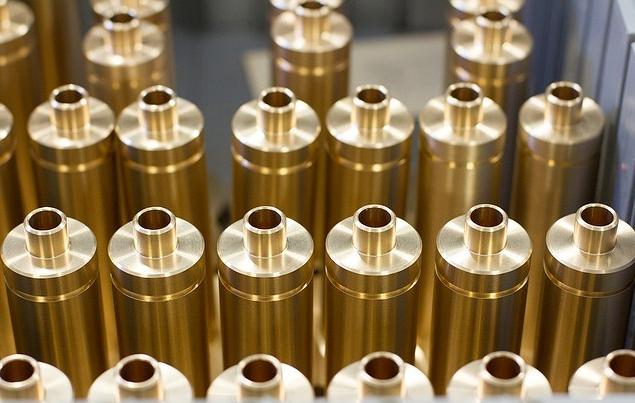Brass is a yellow alloy of copper and zinc that is valued for its corrosion resistance, machinability, attractiveness, and ability to be formed or joined. It has many applications in both industrial and decorative products.
What Are the Different Types of Brass
- -Alloy 260 (Cartridge Brass): Has approximately 62% copper and 38% zinc. Commonly used for ammunition cartridge cases and other applications requiring high strength. Also known as Brass 260.
- -Alloy 280 (Muntz Metal): Composed of approximately 60% copper and 40% zinc. An architectural grade brass known for its corrosion resistance. Used in plumbing fittings, valves, hardware, etc.
- -Alloy C360 (Free Machining Brass): Contains about 60% copper, 39% zinc, and 0.35% lead. The small amount of lead allows for easier machining compared to other brasses. Used for quick and efficient production of parts.
- -Alloy 385 (Architectural Bronze): Approximately 85-88% copper, 5-6% tin, 4% zinc, and 1% lead. Known for its ability to withstand marine environments. Used in hardware, outdoor lighting, and boat fittings. Has a darker gold color than other brasses.
- -Alloy 464 (Naval Brass): Approximately 65% copper, 35% zinc. Highly corrosion resistant with excellent strength. Used for plumbing, steering gears, rudders, and seacocks on ships due to saltwater resistance. Also known as seawater-resistant brass.
What Are the Different Properties of Brass
| Alloy | Composition | Density (g/cm3) | Hardness Rockwell | Yield Strength (MPa) | Ultimate Tensile Strength (MPa) | Elongation @ Break (%) | Modulus of Elasticity (GPa) | Machinability |
| 260 (Cartridge Brass) | Cu 61-65%, Zn 34-37.5%, Pb 1.5-3% | 8.4 | 70-85 | 300 | 550 | 15-35 | 100 | Good |
| 280 (Muntz Metal) | Cu 60%, Zn 39-40%, Pb 1% | 8.4 | 70-85 | 300 | 500 | 20-35 | 100 | Excellent |
| C360 (Free Machining Brass) | Cu 59%, Zn 39%, Pb 1.5%, Sn 0.2% | 8.4 | 70-85 | 250 | 450 | 20-40 | 100 | Excellent |
| 385 (Architectural Bronze) | Cu 90-95%, Sn 4-6%, Pb 0.5-2% | 8.8 | 80-95 | 400 | 600 | 10-25 | 110 | Fair |
| 464 (Naval Brass) | Cu 70%, Zn 29%, Sn 0.5% | 8.5 | 70-85 | 400 | 600 | 15-30 | 100 | Good |

Maximum Operating Temperature of Brass
The maximum operating temperature of brass can vary depending on the exact alloy composition, but in general:
- Standard brass alloys (such as cartridge brass or machining brass) have a maximum operating temperature of around 300-400°F (149-204°C). Above this temperature, they can start to lose mechanical properties.
- Naval brass and other high-zinc brass alloys have a higher maximum operating temperature of around 500-600°F (260-316°C).
- Architectural bronzes, which contain more tin and less zinc than standard brass, have an even higher maximum operating temp of around 800-1000°F (427-538°C).
Pros and Cons of Brass
1. Here are some key advantages of using brass:
- Corrosion resistance – Brass is very resistant to corrosion from air, water, chemicals, and other environmental factors due to the protective oxide layer formed on its surface. This makes it durable.
- Workability – Brass can be cast, machined, rolled, drawn, bent, pressed, or otherwise formed due to its moderate strength and ductility. It’s easy to fabricate.
- Machinability – The alloy can be machined easily using conventional tools to close tolerances. Brass chips well during machining operations.
- Sustainability – Brass is 100% recyclable without any loss in quality. This allows it to be reused or remanufactured repeatedly.
- Friction properties – Brass has a low coefficient of friction and good lubricity, making it suitable for bearing surfaces and sliding components.
- Electrical conductivity – CNCJY Brass conducts electricity well, allowing its use in electrical applications, switches, connectors, etc.
- Durability – The self-forming oxide layer gives brass excellent long-term wear resistance in components subjected to regular use and abrasion.
- Strength – Most brasses have moderate strength suitable for many applications despite their machining ease.
- Appearance – Brass has an attractive golden color that does not deteriorate, making it suitable for architectural and decorative uses.
- Joinability – Brass can be readily brazed, soldered, riveted, or welded to join components for demanding applications.
Some disadvantages or limitations of brass include:
- Cost – Brass is more expensive than other corrosion-resistant alloys like certain stainless steels.
- Strength – Brass is weaker than steel and may not be suitable for high-stress structural applications.
- Galvanic activity – Brass is lower than steel on the galvanic series, so it can corrode faster if in direct contact with a more noble metal.
- Uprating temps – Brass has a maximum operating temperature of around 500-600°F, so not suitable for high-heat applications.
- Work hardening – Brass can work harden if severely bent or deformed, reducing ductility.
- Requirements – Naval or other strict brass may have compositional certification requirements.